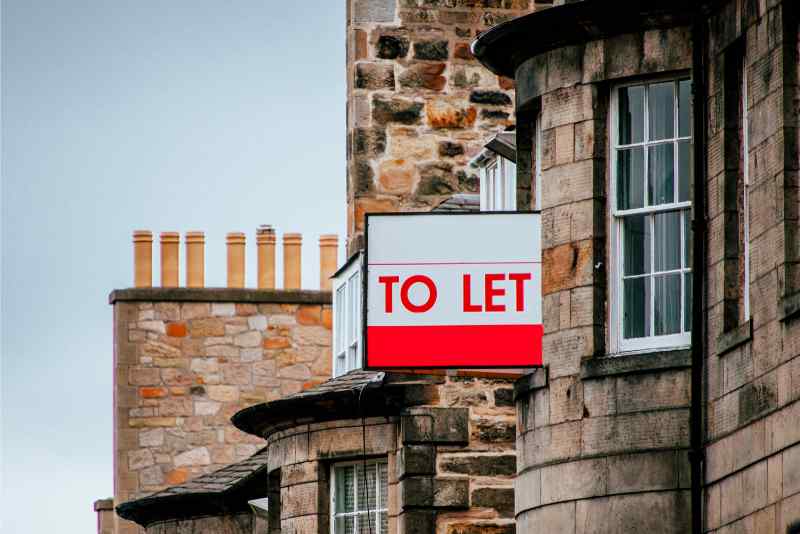Investing in property is an exciting venture, but for many, the biggest obstacle is scraping together enough for a deposit. Research on the property market reveals that a shocking 40% of would-be property investors in the UK can’t afford the initial deposit on the cheapest homes in their region.
This guide will offer insights into how much deposit is needed for an investment property while recommending practical tips to pool the funds. With some resourcefulness and the right plan, that dream of building a property portfolio can be within your reach.
How Much Deposit Is Needed for a Buy-to-Let?
To invest in a buy-to-let property with Baron & Cabot, you’ll typically need a minimum of 20% as a deposit. However, with property prices rising over the long term, putting down more than the minimum deposit is ideal if you can, as it means you can borrow less and pay lower interest charges.
Financing Options
There are a few ways to finance an investment property purchase. You can use cash savings for the full amount, take out a mortgage, use equity from your own home, crowdfund, or combine multiple options.
Taking out a mortgage is common, where you put down at least 20% and borrow the rest. Interest rates are usually higher for buy-to-let mortgages versus residential home loans. We recommend looking for competitive offers from lenders that specialise in buy-to-let and new-build investment property financing.
As seasoned property investment experts, Baron & Cabot has a list of trusted lenders with competitive rates for both UK and international investors. When you partner with us, we can connect you with the right lender to bring your dream of purchasing your next investment property to life.
How Much Can You Borrow?
The amount you can borrow depends on your income, credit score, existing debts, and property value. Most lenders will lend up to 75–80% of the property’s value, known as the loan-to-value (LTV) ratio. The more you put down, the better the interest rate and terms you can get approved for.
As an investor, you need to make sure any property you buy will generate enough rental income to cover all costs, property management fees inclusive. That’s where UK property investment experts like Baron & Cabot come in — we’ve done the due diligence to determine the best locations, realistic rental rates, expenses, tax implications, and cash flow to ensure a good return on your investment.
The 20% initial deposit is just the start; you need to go in with your eyes open to the ongoing responsibilities of a buy-to-let investment. But with the right property development and financing in place, it can be a rewarding endeavour for generations to come.
Contact Baron & Cabot to get started immediately.
2 Tips for Finding a Buy-to-let Mortgage

Securing a mortgage is pretty straightforward for UK residents — all you basically need is a good credit score and proven abilities to pay back your loan on time. With international investors buying property in the UK, the case is a bit different since mortgage firms consider overseas lending somewhat risky.
While Baron & Cabot can connect investors with reputable mortgage firms to cover how much deposit you need for a buy-to-let, we recommend adhering to the following additional tips to ensure your dream of owning investment properties isn’t cut short due to a lack of funds:
- Build your deposit.
- Look for alternative financing.
1. Build up your deposit.
It’s essential to pool as many funds as you can. The more you can put down as a deposit, the better the interest rate you can get on your mortgage.
Some options to build up your deposit include:
- Save money from your income: Set a budget and look for ways to cut costs so you can save as much as possible each month.
- Sell unused assets: Look into any valuables you no longer need and consider putting them on sale to generate extra cash for your deposit.
- Take out a savings product: Products like high-yield savings accounts or money market accounts can help your money grow faster through higher interest rates.
2. Look at alternative financing.
For international investors or those with limited credit history, the process of obtaining a traditional mortgage may be confusing.
Some alternatives include:
- Short-Term Loans: Hard money loans or bridge loans can provide short-term financing. However, they come with higher interest rates and need to be paid back within a shorter period, as determined by the lender.
- Private Lenders: These include wealthy individuals or companies that lend money for real estate investments at higher interest rates. This option can be riskier but easier to qualify for.
5 Tips for Saving Up Your Investment Property Mortgage Deposit
Now that you know how much deposit is needed for an investment property, it’s time to start saving up, and here are some tips:

- Make a savings plan: Create a realistic plan to save a set amount each month that will allow you to reach your goal in a reasonable timeframe, such as 2–3 years. Automate transfers into a high-yield savings account so you save before paying other bills. Increase the amount whenever possible — every little bit helps.
- Reduce expenses: Look for ways to cut your budget by at least 10–15% so you have more to put towards your deposit fund each month. You may choose to stop eating out, cancel unused subscriptions, and avoid impulse purchases. Instead, cook more meals at home and find free hobbies to fill your time.
- Consider a side hustle: If reducing expenses is still not enough, consider taking on a side gig to generate extra income solely for your deposit fund. If you own a car, consider driving for a ridesharing service in the evenings, do market research studies, complete online surveys, or turn a hobby into a money-making endeavour. Any additional money from a side hustle can significantly speed up reaching your savings goal.
- Invest your money: Keep your deposit fund in a high-interest savings account, but also consider other low-risk investment options to allow your money to potentially grow faster. For example, certificates of deposit (CDs) usually offer higher interest rates than standard savings. You can also explore peer-to-peer lending platforms and certain types of bonds but do thorough research to understand the risks before investing.
- Ask friends or family for help: If other options aren’t possible, consider asking close relatives and friends for help to reach your goal sooner. Be upfront about a repayment plan so you can pay them back, even if it’s over time and interest-free. Make sure any agreements are in writing to avoid potential issues down the road.
With diligent saving plans and the determination to get into property investment, you can build up enough for a sizable deposit in a relatively short period. Stay focused on your goal and keep working on your plan to achieve it — the financial freedom of owning an investment property will make all your efforts worthwhile.
Frequently Asked Questions
What is the minimum deposit for an investment property in the UK?
The minimum deposit for an investment property in the UK is typically 20% of the property’s value, which corresponds to a loan-to-value (LTV) ratio of 80%. However, some lenders may require a larger deposit of up to 40% for a buy-to-let property.
Is £10,000 enough for a house deposit in the UK?
Yes, £10,000 can be enough for a house deposit in the UK. The exact amount required depends on the property’s cost and location. Generally, you’d need between £5,000 to £10,000 for a low-cost home, £10,000 to £20,000 for the UK average, and significantly more, around £40,000 to £50,000, for London or high-priced areas.
Is having a buy-to-let property worth it?
Yes, buy-to-let properties can be worth it as they can generate both rental income and capital growth. With increasing rental demand and the potential profitability at an EBIT (earnings before interest and taxes) level, buy-to-let investments can be a worthwhile endeavour for investors. However, you’ll need the assistance of property investment experts to achieve maximum returns.
Conclusion
Now that you know how much deposit is needed for an investment property, you should start saving up for your first purchase. With some discipline and dedication, you’ll soon be ready to make your first investment in property. But remember that due diligence is needed to ensure you’re not burning your hard-earned money — contact Baron & Cabot to guide you on your property investment journey.
Disclaimer: Any information provided by Baron & Cabot does not constitute financial advice and is for educational purposes only.

